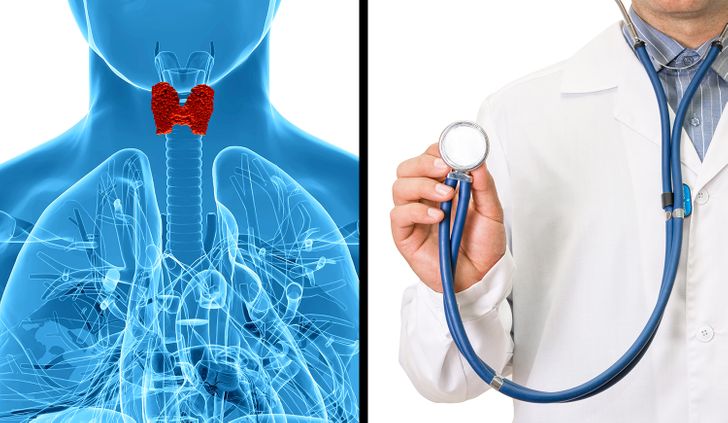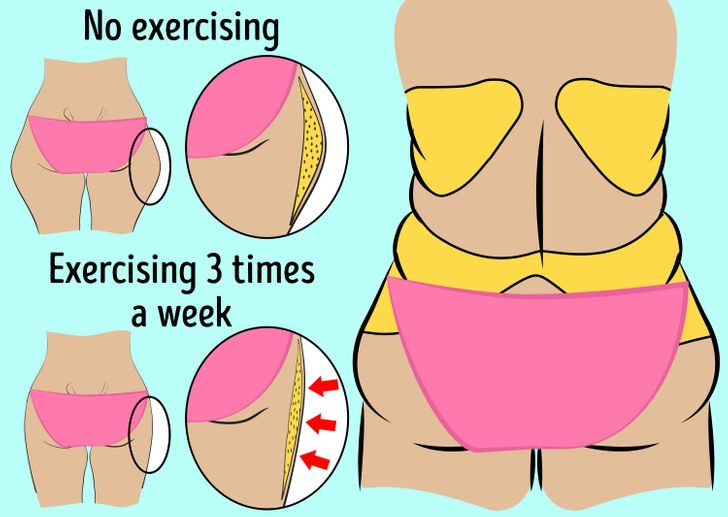According to scientists, our metabolic rate decreases by 2% every decade after age 20. We also tend to move less as we get older. Slow metabolism, little physical activity, and unhealthy eating habits can lead to weight gain and health problems in a middle-aged person. See what steps you can take to boost your metabolism and keep your weight in check.
We all know that exercising and dieting are necessary for weight control. But few of us remember that increasing our metabolism is crucial to staying healthy and keeping our bodies in good shape, as a slow metabolism can be a sign of serious health problems and can ruin our efforts to stay fit.
We’ve created 6 strategies that can help you improve your metabolism and prevent weight gain.
Ways to Prevent Middle-Age Weight Gain
Visit A Doctor

Weight gain in middle age can be related to health problems such as thyroid or adrenal gland disorders. Thyroid gland disorder, in particular, causes a decrease in basal metabolic rate, leading to weight gain.
If you want to stay healthy and have your metabolism working properly, visit your endocrinologist or family doctor once a year and get an endocrine system test.
Stick To Your Daily Routine

Studies have shown that lack of sleep can be related to high food intake and consequently to weight gain. If you don’t get enough sleep, your body needs extra energy for the extra waking hours and you feel hungry. As a result, you eat more than you need and gain extra pounds.
Make sure you don’t skip breakfast. It is the most important meal of the day, as it speeds up your metabolism and keeps you active throughout the day.
Choose a breakfast rich in vitamins and fiber, such as oatmeal with nuts and berries or an omelette with vegetables and herbs. Do this and you’ll be sure to get your day off to a good start.
Be Active!

With technology developing so fast, we tend to move less. More and more people are choosing part-time jobs or working from home, which means we often fall short on those 15-20 minute daily walks we used to do.
Cellulite on the arm and back, also known as “love handles” and “muffin tops”, is very difficult to eliminate, but it is the price we pay for a sedentary lifestyle.
Add daily walks to your routine and find time to exercise at least 3 times a week to keep your body in good shape, stay healthy, and reduce the risk of developing more fat deposits.
Improve Your Workouts

If you exercise but find that your workouts have become less effective, try high-intensity interval training or HIIT. This training strategy alternates short periods of intense exercise with less-intense recovery periods.
Research has shown that even 15 minutes of HIIT can be more effective than a conventional one-hour training session. HIIT will help you burn more calories during training and will remain effective even 24 hours later.
If you exercise with 1.5 kg dumbbells, try 2.5 kg dumbbells and you will see that you can get better results in a shorter period. HIIT programs can be different, but as a rule, they all last less than 30 minutes.
So saying you don’t have enough time to exercise is no longer an excuse.
Drink Enough Water

It’s a well-known fact that drinking water before a meal can fill you up and make you eat less, but few of us know that water can also boost metabolism.
Research has shown that drinking 0.5 liters of water can increase metabolism by up to 25% for one hour.
You can increase this calorie-burning effect by drinking ice water and having your body use additional energy to heat the water to body temperature.
Cut Down On Alcohol

If you want to control your weight, alcohol is one of the products you should cut down, and not just because of the “empty calories” it contains. Our bodies cannot store alcohol and metabolize it right away.
Fats and sugars cannot be metabolized efficiently during alcohol consumption, which can lead to weight gain. Make sure your alcohol consumption is moderate.
Which of these strategies would you like to try? If you know of other ways to improve your metabolism, feel free to share them in the comments!
Preview photo credit Shutterstock.com, Depositphotos.com


